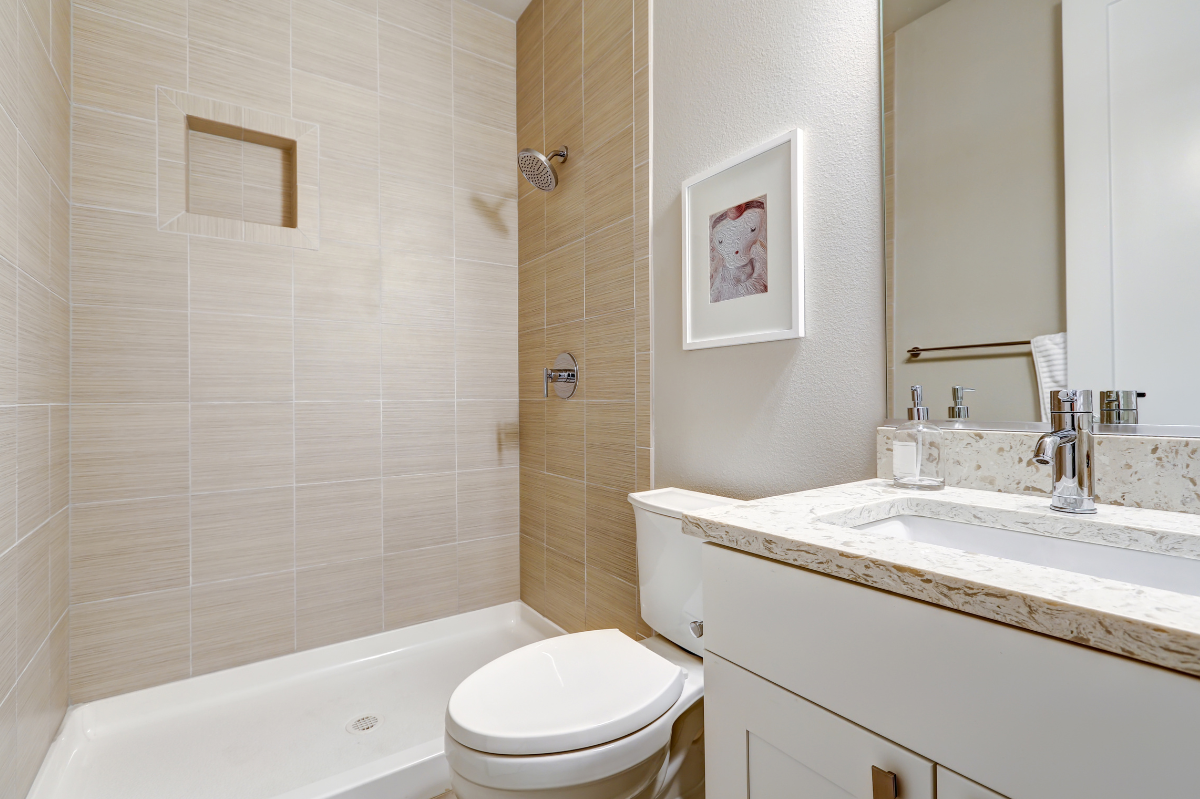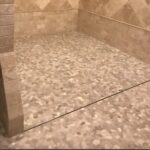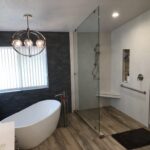A tub surround is one of the easiest ways to give your bathroom a refreshed look without the stress of a full-scale remodel. Designed to fit around your existing bathtub, these surrounds are both practical and stylish, protecting your walls from water damage while enhancing the aesthetics of your space.
Whether you’re working with a budget-friendly DIY project or planning a high-end installation, this guide will walk you through everything you need to know about tub surrounds, from the types available to installation tips and maintenance strategies.
What is a Tub Surround, and Why Do You Need One?
A tub surround is a waterproof barrier made of panels that are installed on the walls surrounding your bathtub. Its primary purpose is to protect your walls from moisture, which can lead to mold, mildew, and structural damage. By covering this high-moisture area, a tub surround ensures that your bathroom remains functional and visually appealing for years.
Unlike traditional tiles, which require grouting and careful sealing, tub surrounds are simpler to install and maintain. They are also available in various styles, colors, and materials, making it easy to find an option that suits your bathroom’s design. For those with aging bathrooms or damaged walls, a tub surround can offer an affordable and practical solution to enhance both protection and aesthetics.
Benefits of Tub Surrounds
Tub surrounds have grown in popularity due to their numerous advantages over alternative options like tiles or bare walls.
Cost-Effective Solution
Installing a tub surround is far cheaper than tiling an entire bathroom wall. You save on materials, labor costs, and the time involved in intricate tile work.
インストールの容易さ
Many tub surround kits are designed for DIY enthusiasts and can be installed in just a few hours. They often come with pre-cut panels and adhesive instructions, making the process straightforward.
低メンテナンス
Tub surrounds are typically made from materials that resist mold and mildew, which means you won’t need to spend hours scrubbing grout lines or resealing tiles.
Design Variety
From sleek, modern finishes to textured panels that mimic tile or stone, there’s a tub surround to fit every style. You can find options in fiberglass, acrylic, or solid-surface materials, allowing you to customize the look and feel of your bathroom.
Types of Tub Surrounds
Understanding the different types of tub surrounds will help you choose the one that best fits your needs.
Single-Piece Surrounds
Single-piece tub surrounds consist of one large panel that covers the entire wall area around the tub.
Pros: Seamless look, fewer joints, easier to clean.
Cons: Difficult to maneuver in smaller spaces and may require professional help for installation.
Multi-Piece Surrounds
Multi-piece surrounds are made of interlocking panels that fit together to cover the tub area.
Pros: Easier to transport and install, especially in tight spaces.
Cons: Requires precise sealing at the seams to prevent water leakage.
Custom Tile Surrounds
For homeowners who prefer a more traditional look, custom tile surrounds offer endless design possibilities.
Pros: High-end, luxurious appearance.
Cons: Expensive, labor-intensive, and requires ongoing maintenance.
Solid-Surface Surrounds
Made from engineered materials like acrylic or stone, these surrounds are highly durable and resistant to stains.
Pros: Premium look, long-lasting durability.
Cons: Higher upfront cost compared to other options.
How to Choose the Right Tub Surround
Choosing a tub surround isn’t just about aesthetics; you need to consider materials, fit, and maintenance requirements.
Material Matters
Fiberglass and acrylic are the most common materials due to their affordability and ease of installation. Fiberglass is lightweight but less durable over time, while acrylic offers a sturdier, more polished finish. For a more luxurious look, solid-surface materials or custom tiles may be worth the investment.
Measuring for the Perfect Fit
Measure the length, height, and depth of the area around your bathtub to ensure the surround fits properly. Take note of fixture locations like faucets and showerheads to avoid installation hiccups.
Style and Budget
Consider how the tub surround will complement your bathroom’s overall style. Minimalist spaces may benefit from sleek, single-color panels, while traditional designs might call for textured or patterned options. Always balance your design preferences with your budget.
Step-by-Step Installation Guide
Installing a tub surround can be a DIY project if you follow the correct steps.
-
Prepare Your Bathroom – Remove old tiles, adhesive, or wallpaper. Clean the area thoroughly and repair damaged walls with water-resistant drywall or cement board.
-
Measure and Mark – Double-check dimensions and mark fixture cutouts.
-
Apply Adhesive – Spread adhesive evenly on the panels or wall, following manufacturer instructions.
-
Install Panels – Start with the back panel, then sides. Press firmly and level each piece.
-
Seal the Edges – Apply waterproof caulk to seams and edges to prevent leaks.
-
Let It Set – Allow adhesive and caulk to dry for 24–48 hours before use.
Maintenance Tips for Tub Surrounds
Keeping your tub surround in good condition is simple. Wipe it down regularly with a non-abrasive cleaner to prevent soap scum and mineral buildup. Avoid harsh chemicals that could damage the surface.
Inspect caulking periodically and reapply if you notice cracks or wear. With proper care, your tub surround can last for years.
避けるべきよくある間違い
One of the most common mistakes is failing to prepare the walls adequately. Leftover debris or uneven surfaces can affect the adhesive’s grip, leading to loose panels. Another issue is poor sealing at seams, which can let water seep behind the panels.
Always double-check measurements and use high-quality caulk to ensure a watertight finish.
結論
A tub surround for an existing tub is a practical and affordable way to upgrade your bathroom. By understanding the different types, materials, and installation techniques, you can make an informed choice that suits your space and budget.
Whether you’re tackling the project yourself or hiring a professional, a well-installed tub surround will enhance your bathroom’s look and functionality for years to come.





この記事を共有する
プラットフォームを選択してください: